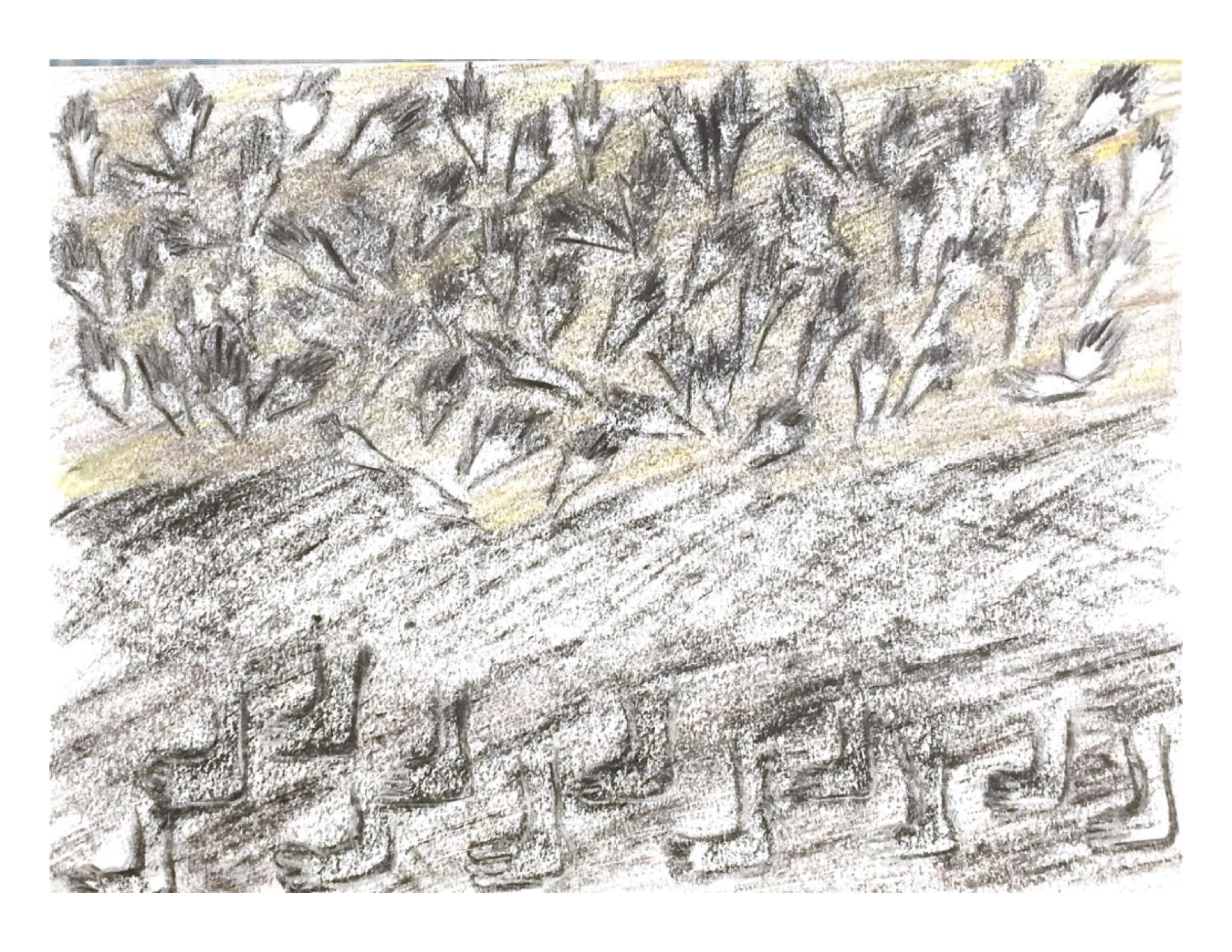The Long March Home
by: Aparna Sharma , October 5, 2020
by: Aparna Sharma , October 5, 2020
In the weeks following the lockdown that was imposed across India in response to the COVID-19 global pandemic, images of tens of thousands of migrant workers surfaced and arrested the consciousness of those privileged enough to ‘stay-at’ and ‘work-from-home.’ The migrant-workers of India, often daily-wage earners, hail from rural and small town communities. They come to India’s metropolises in search of livelihood and mobility. The bulwark of India’s informal economy, migrant workers are sparsely present in the popular visual cultures of India, namely mainstream cinema and television.
Following the lockdown, migrant workers lost their jobs, shelters and steadily even, their supplies of food. With no one to register their presence or to comprehend the lockdown’s impact on them, most migrant workers promptly started leaving for their distant homes. They walked on foot, loved ones and all belongings together, for hundreds of kilometres in the ascending heat. Select media devoted newsprint and air-time highlighting the blisters, wounds, hunger, aspirations, frustrations and also, the mourning for those who did not make it home.
90 years ago, Mohandas Karamchand Gandhi had also taken to foot. He had led people on a famous march to the seaside town of Dandi, in the western Indian state of Gujarat. There they had collected salt from the seashore in an act defying the exploitative salt tax imposed under the British Raj. Gandhi’s salt march was an act of Civil Disobedience. The migrant workers’ march 90 years later is also an act of defiance. Except the defiance is not against a foreign ruler, but it is rooted in a breakdown, a mutual loss of faith between institutionalised power and those it disempowers; the elites and the margins; the literate/upwardly mobile and the illiterate/dispossessed.
Dispossessed of their livelihood and with their hands reduced to gestures of need, the migrant workers took to their feet. They knew human help may or may not come; but they were sure they could rely on their feet. On those feet they marched away from big and glittering towns, towards their homes and lands that assure them food, shelter and community.
The Long March Home chronicles the hunger and self-reliance of India’s migrant workers.

WHO SUPPORTS US
The team of MAI supporters and contributors is always expanding. We’re honoured to have a specialist collective of editors, whose enthusiasm & talent gave birth to MAI.
However, to turn our MAI dream into reality, we also relied on assistance from high-quality experts in web design, development and photography. Here we’d like to acknowledge their hard work and commitment to the feminist cause. Our feminist ‘thank you’ goes to:
Dots+Circles – a digital agency determined to make a difference, who’ve designed and built our MAI website. Their continuous support became a digital catalyst to our idealistic project.
Guy Martin – an award-winning and widely published British photographer who’s kindly agreed to share his images with our readers
Chandler Jernigan – a talented young American photographer whose portraits hugely enriched the visuals of MAI website
Matt Gillespie – a gifted professional British photographer who with no hesitation gave us permission to use some of his work
Julia Carbonell – an emerging Spanish photographer whose sharp outlook at contemporary women grasped our feminist attention
Ana Pedreira – a self-taught Portuguese photographer whose imagery from women protests beams with feminist aura
And other photographers whose images have been reproduced here: Cezanne Ali, Les Anderson, Mike Wilson, Annie Spratt, Cristian Newman, Peter Hershey
